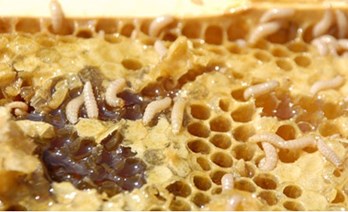
Department investigates the presence of Aethina tumida in bee hives – “No Bee, Without food”

Known as “small hive beetle”, the species Aethina tumid is the new challenge for beekeepers São Paulo (photo: disclosure)
The Secretariat of Agriculture and Supply of São Paulo, through the Agricultural Protection Coordination (CDA) It is investigating the presence of the beetle species in Sao Paulo Aethina tumida apiary. The first notification of “small hive beetle”, as it is popularly known beetle ess, It was identified in a beehive that had been captured in the wild in mid-March of 2015, in Piracicaba. The first official notification of the presence of this beetle in Brazil was made on 23 December of the same year by the CDA.Após receipt of notification, the Agricultural Protection banned the property to follow up and held the harvested material for morphological identification. In partnership with professionals Paulista Agribusiness Technology Agency (APTA) and the Ministry of Agriculture and Livestock (Map), He trained their technical staff and is working with Apis mellifera hives order the inspection of apiaries to detect beetle Aethina tumida and registration of properties and apiaries.
"The main damage is caused by beetle larvae which feed on bee larvae and pollen, in addition to pierce the honey-cells to roam, causing the fermentation of honey and pollen, who become unfit for human consumption ", Elio tells Noboru Savazaki veterinarian Secretariat, which operates with the Defense Agriculture. Apart from this injury, infestation of the colonies can cause leakage of the swarm and the abandonment of the hive. The adult beetles can survive in the wild feeding on fruit.
To control this pest, it is important for beekeepers to notify an agricultural defense unit, any abnormality observed in beehives as its, for example, the presence or beetle larvae, directs Savazaki.
The Aethina tumida beetle is native to sub-Saharan Africa and over the years has been identified in various countries around the world. infestamOc, mainly, bee hives species Apis mellifera, However, There are reports infestation in bee colonies without stings.
The newly emerged from pupa beetle is light brown and gradually darkens. Adults measure an average of five millimeters and weighing on average Thirteen milligrams. Females are slightly larger than males and invade bee hives, which lay eggs with pearly appearance, measuring 1,5 mm length. These eggs hatch generating larvae have several protrusions on the body and can measure up 9,5 mm. After maturation, the larvae leave the hives, Indo ao only, where will the stage of pupa.
Until nowadays, little progress has been achieved in the search for chemical control methods of the pest, since the use of chemicals leads to the risk of contamination of the products and by-products of the apiary, in addition to being a risk to the life of bees. The control has been done by using cultural techniques, biological and genetic. Cultural controls consist of changes in the practice of beekeeping, with the intention of limiting, but not eradicate the plague.
For the mechanical control, They are known five kinds of traps to catch beetles and disposal. Biological control involves, among other techniques, the genetic selection of some bee colonies that are able to detect and remove the litters that have suffered oviposition by beetle (hygiene behavior). Although no one has control 100% effectiveness, employing various control strategies can limit the populations of beetles to manageable levels.

Sorry, the comment form is closed at this time.